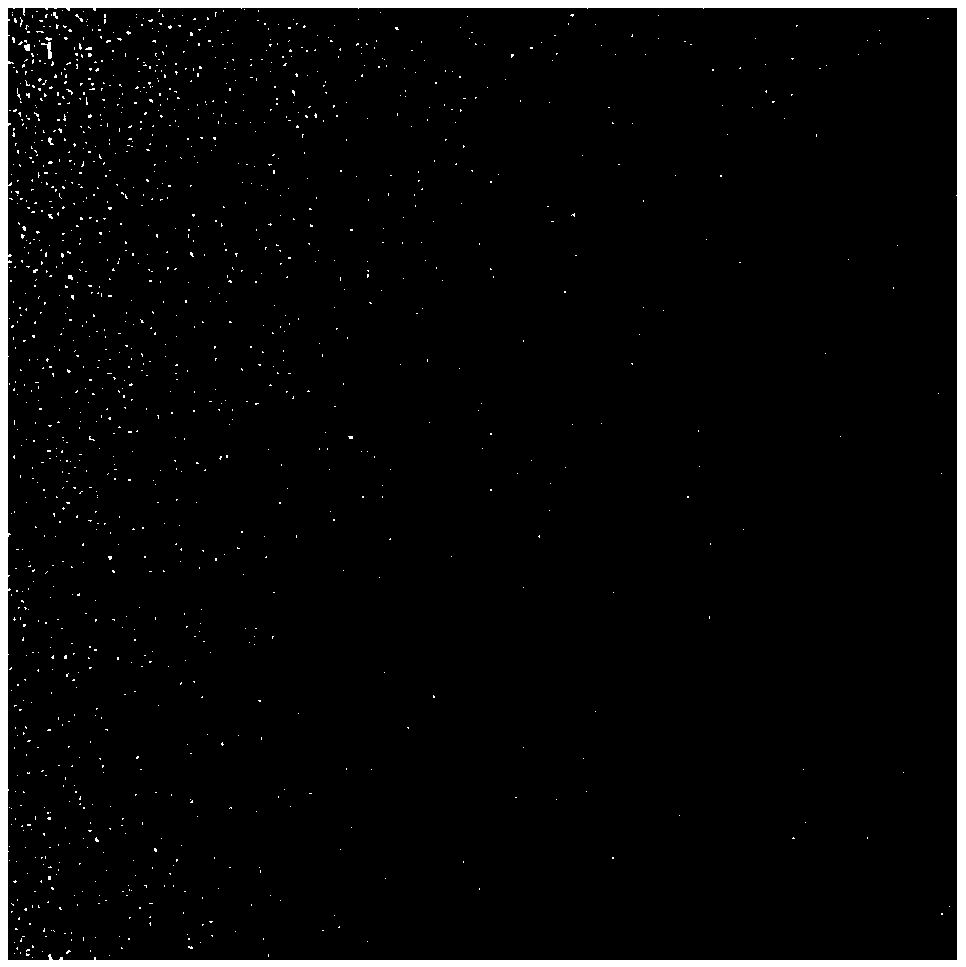Preparation method of magnetic resonance contrast agent targeting blood-brain barrier and glioma
A magnetic resonance contrast agent and mass ratio technology, which is applied in the direction of nuclear magnetic resonance/magnetic resonance imaging contrast agents, preparations for in vivo tests, medical preparations with non-active ingredients, etc., can solve the problem of lack of targeting and difficult Across the BBB, the body has potential toxicity and other problems, to achieve the effect of easy crossing the blood-brain barrier, simple and easy preparation process, and uniform particle size
- Summary
- Abstract
- Description
- Claims
- Application Information
AI Technical Summary
Problems solved by technology
Method used
Image
Examples
Embodiment 1
[0038] (1) Preparation of ferric oxide nanoparticles coated with oleic acid: 2.7g ferric chloride hexahydrate was added in a 100ml round bottom flask, then 9.125g sodium oleate, 20ml ethanol, 15ml distilled water and 35ml n-hexane were added successively Alkanes were heated at 70°C for 4h in a magnetic stirrer while maintaining 700 rpm. Cool to room temperature after the reaction is complete. Wash the reacted liquid three times with distilled water and dry it overnight, leaving the waxy liquid that is ferric oleate; take out 1.8g of ferric oleate and add it to a three-necked flask, add 3.22g of oleyl alcohol and 10g of diphenyl ether. Under protection, heat the reaction system to 90°C for 2 hours to remove water and air in the solution, then continue to heat up to 200°C, keep for 30 minutes, precipitate with ethanol, dissolve and centrifuge with n-hexane to obtain black precipitates, namely iron ferric oxide nanoparticles, Dissolve in chloroform and save for later use.
[00...
Embodiment 2
[0044] 1: MR imaging effect:
[0045] 1.1 Experimental materials and instruments:
[0046] ANG / PEG‐USPIONs hydrophilic nanoparticles prepared in Example 1.
[0047] MR imaging detection instrument model: DiscoveryMR750, GE Medical System, 3.0T
[0048] 1.2. Experimental animals: Blab / c nude mice, with an average body weight of 20 g, were purchased from the animal room of Fudan University School of Medicine.
[0049] 1.3. Orthotopic glioma nude mouse model: U87MG cells (5×10 5 U87MG (dispersed in 5ul PBS) was implanted into the brain of nude mice with a stereotaxic instrument, and it was available after 14‐18 days.
[0050] 1.4. Experimental method: Nude mice with glioma were anesthetized with chloral hydrate, injected contrast agent (5 mg Fe / ml) through the tail vein, and observed the effect of MRI.
[0051] 1.5. Experimental results: image 3 It is the in vitro MR imaging result of ANG / PEG-USPIONs hydrophilic nanoparticles, Figure 4 It can be seen that the prepared hyd...
PUM
| Property | Measurement | Unit |
|---|---|---|
| particle diameter | aaaaa | aaaaa |
| diameter | aaaaa | aaaaa |
| molecular weight | aaaaa | aaaaa |
Abstract
Description
Claims
Application Information
 Login to View More
Login to View More - R&D
- Intellectual Property
- Life Sciences
- Materials
- Tech Scout
- Unparalleled Data Quality
- Higher Quality Content
- 60% Fewer Hallucinations
Browse by: Latest US Patents, China's latest patents, Technical Efficacy Thesaurus, Application Domain, Technology Topic, Popular Technical Reports.
© 2025 PatSnap. All rights reserved.Legal|Privacy policy|Modern Slavery Act Transparency Statement|Sitemap|About US| Contact US: help@patsnap.com



